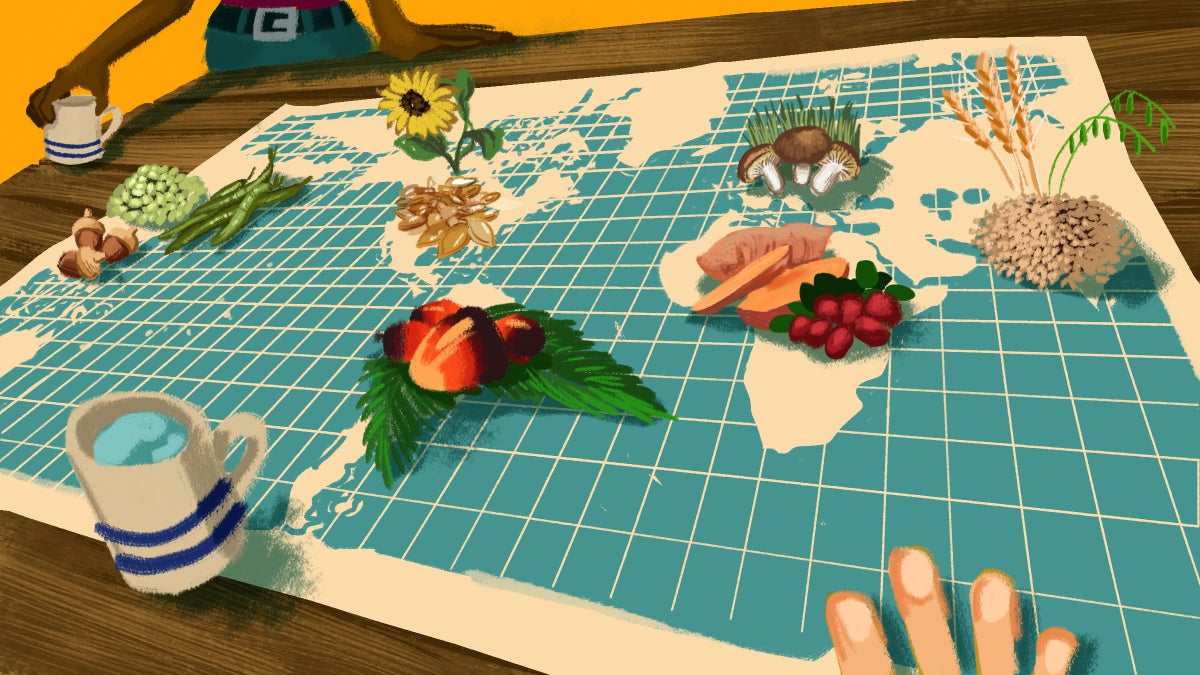
Heading out the door? Read this article on the Outside app available now on iOS devices for members!
a recent study that analyzed dental plaque from the Paleolithic time period, confirms that grains, tubers, and sugary fruits were staples despite modern-day adherents avoiding carbs at all costs. Read on to see how a real paleo plate around the globe would have looked and how you can make a few tweaks to your paleo philosophy for major health benefits.
Africa: Given the vast size of the continent, there’s some regional variability in what you would have found, says paleobiologist Amanda Henry, faculty of archeology at Leiden University in the Netherlands, but wild yams, melons, and berries were eaten across nearly the entire area. Endurance athletes trying to eat paleo should take particular note of the yams since their energy demands often require an elevated amount of carbs to optimize performance.
Middle East: Heavily reliant on wild wheat, barley, and wild oats, especially concentrated where present-day Israel is situated, nobody was following a low-carb diet here, says Peter Ungar, professor of anthropology at the University of Arkansas and author Evolution’s Bite: A Story of Teeth, Diet, and Human Origins. In fact, carbs actually were (and continue to be) key in fueling our brain function.
South America: Even hundreds of years ago, humans were subconsciously building some leeway into their diets to make room for the sweeter stuff. Palm tree stems and palm fruit were popular items in this part of the world, Henry says. Those eating paleo these days should think about practicing balance in a similar way.
North America: Henry says most of what was eaten here can’t be found today—a domesticated edible version of the sunflower, oil-rich seeds from a long-gone squash variety, and a cousin of barley native to the region. These foods would have supplemented some hunted meat but often would have been eaten on their own. Today, many paleo diehards turn to bacon and steak for protein, but it’s also possible to cut back meat intake and turn to other protein sources.
Europe: The food available in this region mirrors the traditional paleo diet the most—heavy in produce and low in grains—assuming people rounded out their plates with local proteins. Frequent foraging led to a diet consisting mostly of mushrooms, pine nuts, tree bark, moss, and wild grasses, according to the study in Nature.
Asia: People here feasted on millet, acorns, beans, and yams, with a little bit of wild grass thrown in, Henry says. Paleo is traditionally a strict low-carb movement, but in this region, people indulged in millet and yams as well. Even longtime paleo advocates recognize that adding a little flexibility to your plan—through healthy carbs or the occasional sweet treat—can prove to be highly beneficial for your health and performance.
Source: outsideonline.com






















Add comment